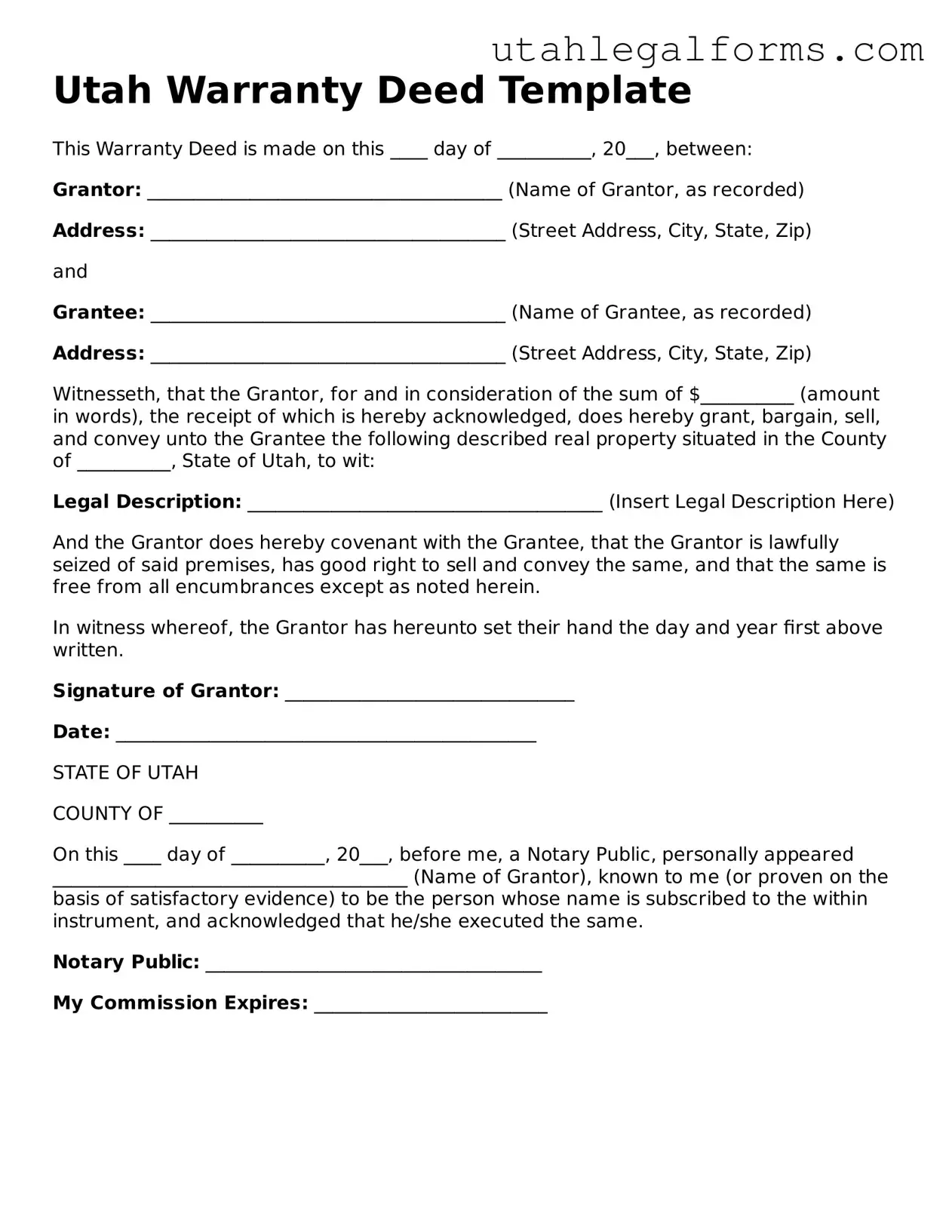Official Deed Form for Utah State
A Utah Deed form is a legal document used to transfer ownership of real property from one person or entity to another. This form ensures that the transaction is documented and recognized under Utah law, providing clarity and protection for both parties involved. To initiate the process of transferring property ownership, consider filling out the form by clicking the button below.
Access Deed Now
